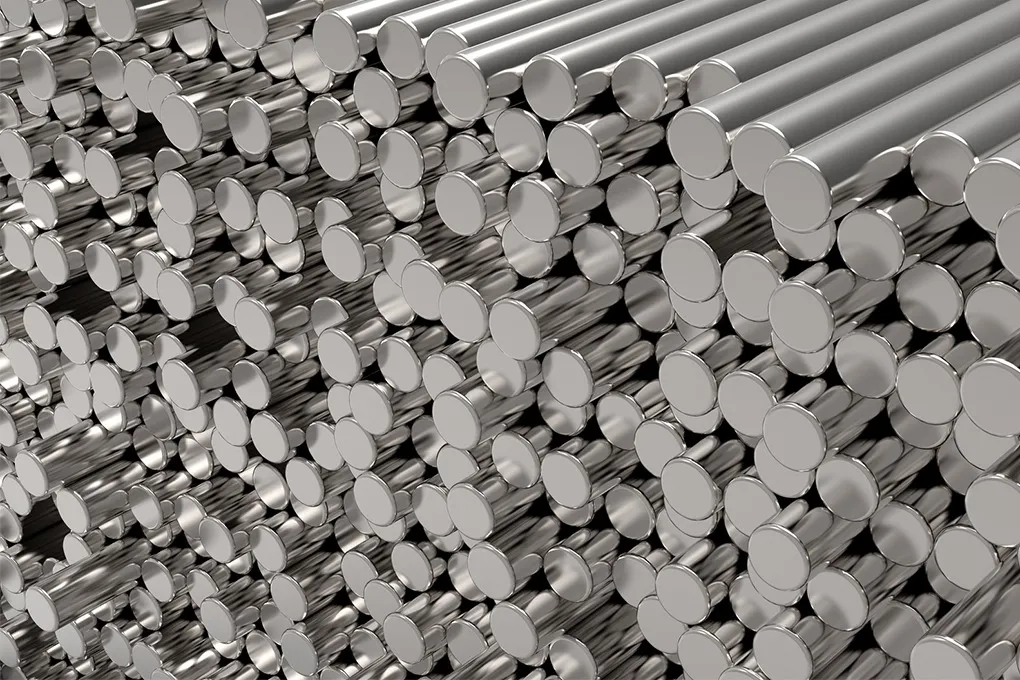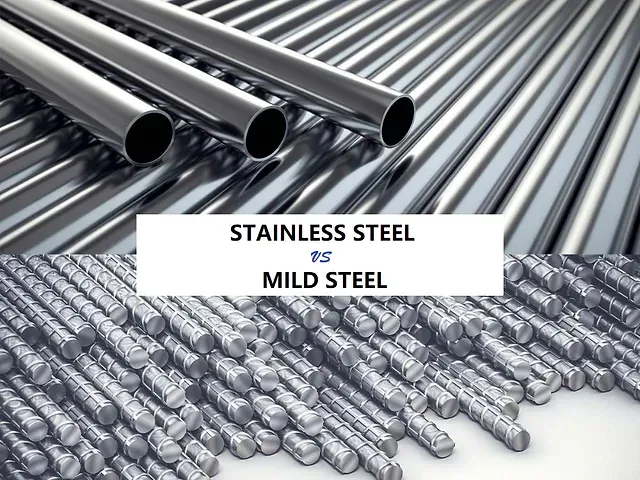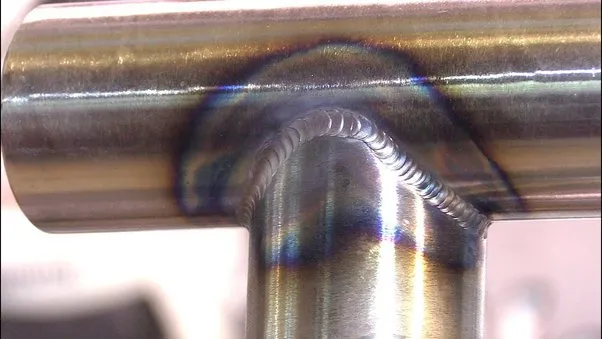The Importance of Combining Stainless Steel and Mild Steel in Industry
In the modern industrial landscape, combining different types of steel is often essential to meet specific performance requirements. Stainless steel and mild steel are two of the most commonly used materials, each with distinct properties that make them suitable for different applications. Understanding how these materials interact, particularly in welding processes, is crucial for engineers and fabricators.
Stainless steel is renowned for its excellent corrosion resistance, high strength, and durability. It’s widely used in environments where rust and corrosion are concerns, such as in the food processing, chemical, and medical industries. On the other hand, mild steel is valued for its ductility, ease of welding, and cost-effectiveness. It is commonly used in structural applications, automotive parts, and construction.
The ability to weld stainless steel to mild steel can offer the benefits of both materials, making it a desirable solution in various industrial applications. For example, in the automotive industry, components made from mild steel may need to be connected to parts made from stainless steel to leverage their respective advantages.
Analyzing the Weldability Between Stainless Steel and Mild Steel

This article aims to provide a thorough analysis of the feasibility and technical aspects of welding stainless steel to mild steel. We will explore the following:
- The distinct properties of stainless steel and mild steel, and how these properties influence the welding process.
- The methods and techniques used to achieve successful welds between these two materials.
- The challenges and considerations associated with this type of welding, including potential issues with weld quality and material performance.
Characteristics of Stainless Steel and Mild Steel
Stainless Steel
Stainless steel is a versatile and widely used material known for its corrosion resistance and strength. Here are some key characteristics:
- Chemical Composition: Stainless steel primarily consists of iron, chromium (at least 10.5%), and varying amounts of nickel and other elements. The chromium content provides its characteristic resistance to corrosion.
- Mechanical Properties: Stainless steel is available in various grades, each with specific mechanical properties. Generally, it offers high tensile strength, good impact resistance, and excellent durability. For example, types 304 and 316 stainless steels are commonly used, with 316 offering better corrosion resistance due to its higher nickel and molybdenum content.
- Applications: Due to its properties, stainless steel is commonly used in applications that require resistance to rust and staining. This includes kitchen appliances, medical instruments, and components in the chemical and food processing industries.
- Weldability: Stainless steel is weldable, but the process requires careful control of heat and filler materials to prevent issues like sensitization (formation of chromium carbide) and distortion.
Mild Steel
Mild steel, also known as carbon steel, is a low-carbon steel with several distinctive features:
- Chemical Composition: Mild steel contains a low percentage of carbon (typically 0.05% to 0.25%) along with small amounts of manganese, phosphorus, and sulfur. This composition contributes to its malleability and ductility.
- Mechanical Properties: Mild steel is known for its good weldability, machinability, and strength. It has moderate tensile strength and impact resistance, making it suitable for structural applications. It is often used in the construction of buildings, bridges, and pipelines.
- Applications: Mild steel is widely used in various sectors, including construction, automotive, and manufacturing. Its affordability and ease of use make it a popular choice for structural beams, automotive frames, and machinery components.
- Weldability: Mild steel is relatively easy to weld using various techniques such as MIG (Metal Inert Gas) and TIG (Tungsten Inert Gas). The low carbon content helps in achieving a clean weld with minimal risk of cracking.
The Feasibility of Welding Stainless Steel to Mild Steel

Differences in Properties Between Stainless Steel and Mild Steel
Understanding the differences in properties between stainless steel and mild steel is crucial for evaluating their weldability:
- Melting Points and Thermal Conductivity:
- Stainless Steel: Generally has a higher melting point (around 1400°C to 1450°C) compared to mild steel. It also has lower thermal conductivity, which can affect the heat distribution during welding.
- Mild Steel: Has a lower melting point (approximately 1425°C to 1540°C) and higher thermal conductivity. This can lead to faster heat dissipation and influence the welding process differently.
- Corrosion Resistance and Strength:
- Stainless Steel: Offers superior corrosion resistance due to the chromium content, which forms a passive oxide layer on the surface. This makes it ideal for applications where resistance to corrosion is essential.
- Mild Steel: Prone to rust and corrosion unless coated or treated. It does not have the same strength or resistance to harsh environments as stainless steel.
Suitable Welding Methods
Different welding methods can be employed to join stainless steel and mild steel, each with its own advantages and considerations:
- TIG (Tungsten Inert Gas) Welding:
- Advantages: Provides precise control over heat and weld quality. Suitable for thin sections and high-quality welds.
- Considerations: Requires a compatible filler material, such as ER309L, to bridge the different compositions of the two steels.
- MIG (Metal Inert Gas) Welding:
- Advantages: Offers a faster welding process with good penetration and bead appearance. Often used for thicker sections.
- Considerations: The choice of filler material is crucial. ER70S-6 or ER309L wires can be used depending on the application and joint design.
- Arc Welding:
- Advantages: A versatile and widely used method suitable for a variety of applications.
- Considerations: Requires careful control of heat and filler material to avoid issues like cracking and distortion.
Factors Affecting Weld Quality
Several factors influence the quality of the weld when joining stainless steel to mild steel:
- Material Thickness and Joint Design:
- The thickness of the materials and the design of the joint affect heat distribution and weld penetration. Proper preparation and fit-up are essential for a strong and clean weld.
- Filler Materials and Heat Input:
- Selecting the right filler material is critical for achieving a sound weld. Filler materials like ER309L are designed to handle the differences in composition between stainless steel and mild steel. Controlling heat input helps prevent problems such as excessive distortion or weak welds.
- Environmental Conditions:
- Welding should be performed in a controlled environment to minimize contamination and ensure optimal weld quality. Factors such as wind, moisture, and temperature can impact the welding process.
Challenges When Welding Stainless Steel to Mild Steel
Welding stainless steel to mild steel presents several challenges that need to be addressed to ensure a successful and durable weld. Understanding these challenges helps in selecting the right techniques and precautions to mitigate potential issues.
Issues Related to Strength and Corrosion Resistance
Strength Discrepancies:
- Difference in Strength: Stainless steel generally has higher tensile strength compared to mild steel. When welding these materials, the weld joint must be designed to handle the differing strengths to avoid potential failure.
- Stress Distribution: Uneven stress distribution between the two types of steel can lead to weak points in the weld, which may fail under load.
Corrosion Resistance:
- Corrosion Potential: While stainless steel provides superior corrosion resistance, the weld area where stainless steel joins mild steel can be vulnerable to corrosion. The mild steel’s susceptibility to rust can compromise the integrity of the joint over time.
- Galvanic Corrosion: When stainless steel and mild steel are in contact in the presence of an electrolyte (e.g., water), galvanic corrosion can occur, where one metal corrodes more rapidly than the other.
Formation of Undesirable Alloys
Contamination Risks:
- Carbon Migration: During welding, carbon from mild steel can migrate into the stainless steel, potentially leading to the formation of chromium carbide, which can weaken the weld and reduce corrosion resistance.
- Alloy Formation: The mixing of stainless steel and mild steel can lead to the creation of undesired alloys in the weld zone, affecting the overall properties of the joint.
Prevention Strategies:
- Proper Filler Material: Using the correct filler material, such as ER309L, can help mitigate these issues by providing a buffer between the two types of steel and minimizing contamination.
- Controlled Heat Input: Carefully controlling the heat input during welding can reduce the risk of unwanted alloy formation and ensure a cleaner weld.
Potential for Cracking and Distortion
Cracking Issues:
- Thermal Expansion Mismatch: Stainless steel and mild steel have different coefficients of thermal expansion. During the cooling phase of welding, the differing expansion rates can cause stress and result in cracking.
- Residual Stresses: The welding process can induce residual stresses due to uneven heating and cooling, leading to potential cracking or warping of the weld area.
Mitigation Measures:
- Preheating and Postheating: Preheating the materials and applying post-weld heat treatment can help reduce thermal stresses and minimize the risk of cracking.
- Controlled Cooling: Allowing the weld to cool slowly and uniformly can help prevent distortion and reduce residual stresses.
Real-World Applications of Welding Stainless Steel to Mild Steel

Welding stainless steel to mild steel is a common practice in various industries due to the unique properties each material offers. Here, we explore practical applications where this combination is utilized and the benefits it brings.
Industrial Machinery and Equipment
Applications:
- Fabrication of Equipment: Many industrial machines and equipment require components made from both stainless steel and mild steel. For instance, frames and structural supports might be fabricated from mild steel, while parts exposed to harsh environments or requiring high corrosion resistance are made from stainless steel.
- Components and Assemblies: Welding stainless steel to mild steel is common in producing components like conveyors, tanks, and mixing vessels. The mild steel provides structural strength, while the stainless steel components ensure durability and resistance to corrosion.
Benefits:
- Cost-Effectiveness: Utilizing mild steel for the structural parts reduces costs, while stainless steel ensures that critical parts withstand corrosive conditions.
- Enhanced Performance: The combination leverages the strengths of both materials, enhancing the overall performance and longevity of the equipment.
Construction Industry
Applications:
- Structural Frameworks: In construction, mild steel is often used for the primary structural framework of buildings due to its strength and cost-effectiveness. Stainless steel may be used for decorative elements, fasteners, or components exposed to the elements.
- Bridges and Infrastructure: Welding stainless steel to mild steel can be found in the construction of bridges and other infrastructure where parts of the structure are subjected to both structural stress and environmental conditions.
Benefits:
- Durability and Aesthetics: The use of stainless steel in visible or exposed parts of a structure not only enhances aesthetics but also provides added durability against environmental factors.
- Improved Lifespan: Combining materials helps in achieving a balance between structural integrity and resistance to environmental wear.
Automotive and Aerospace Industries
Applications:
- Vehicle Frames and Components: In the automotive sector, mild steel is commonly used for frames and chassis due to its strength and ease of welding. Stainless steel is often used for exhaust systems, trim, and components requiring resistance to high temperatures and corrosion.
- Aircraft Parts: Aerospace applications often require welding stainless steel to mild steel in parts where high strength and resistance to extreme conditions are crucial, such as in landing gear or engine components.
Benefits:
- High Performance: The combination allows for components that are both strong and resistant to harsh conditions, which is essential for automotive and aerospace applications.
- Cost and Efficiency: Using mild steel where high performance is not critical helps in reducing costs while using stainless steel in high-stress or high-corrosion areas optimizes performance.
Conclusion
Summary of Weldability Between Stainless Steel and Mild Steel
Welding stainless steel to mild steel is indeed feasible and widely practiced in various industrial applications. The distinct properties of these two materials—such as their differing melting points, strength, and corrosion resistance—present both opportunities and challenges. Successfully achieving a high-quality weld involves understanding these differences and employing the right techniques and materials.
Leave a Reply